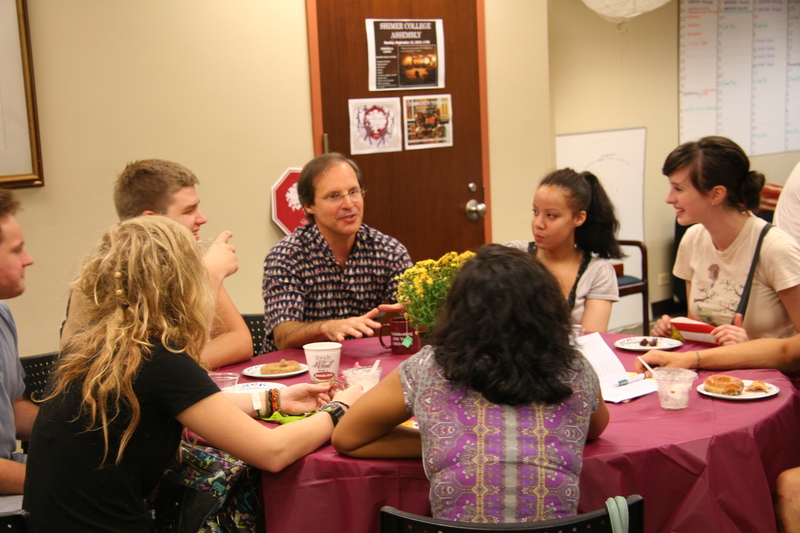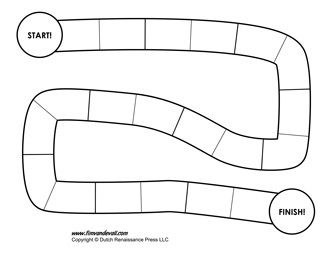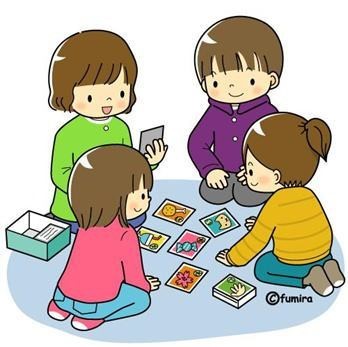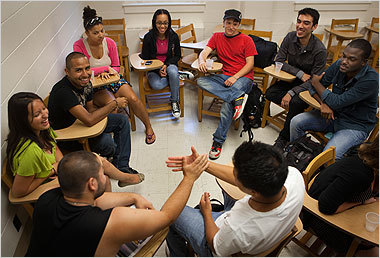

When teaching grammar or vocabulary to our ESL students, we should be creating and implementing lessons that allow the students to see the concept being used in a real-life context. After the students see the concept being used, we teach the rules and give the students ample guided practice.
How Do I Plan Lessons for my English Students?
In the final stage of the lesson, which is known as the production, the students are asked to use the language they have just practiced in a more open-ended and creative structure. Give the students an opportunity to produce original and meaningful communication. Students are working at this stage in pairs or small groups to use the language that was taught and practiced in order to produce the language either in a spoken or written manner and is generally task-based. The teacher’s role at this point is to manage time, make sure students are on task, offer feedback if requested, and keep a written record of students’ errors. The students should be doing the work and showing you that they have a good grasp on how and when to use the vocabulary or grammar taught in the lesson.
The difference between the practice and production stages can be minimal, depending on the English level. However, remember that practice activities should be guided and generally have a correct answer. Productions, on the other hand, can have many correct answers and mirror real-life, authentic situations.
To plan a good production activity for your PPP lessons, consider the natural context in which this vocabulary or grammar concept would be used. For instance, if I am teaching a lesson on physical description words to a class of beginners, I can have them describe their family members or celebrities in the production. If my lesson is a grammar lesson on the Past Simple, I can ask students to talk about a vacation they went on recently or what they did over the weekend. To properly prepare your students for the production activity, make sure your dialogue mirrors the activity, and the practice activities are well-scaffolded and prepare the students to perform the production successfully.
If you are stumped on ideas for productions or looking for something new to incorporate into your lessons, consider one of these production activities.
1 - Role Plays/Create Dialogues
Incorporated into many language classrooms, role plays or asking the students to create a dialogue is a practical and effective way to get students speaking in a natural context. For instance, if I teach a lesson on injuries and illnesses, I can ask the students to act out a doctor's office scene using the vocabulary the lesson focused on. For all students, especially lower-level ESL students, make sure instructions and expectations are clear. For example, "Each student needs to talk five times and use a minimum of three vocabulary words." OR "The customer must order a drink, a meal and a dessert." As teachers, we can bring in props or realia and make this a really fun experience for our students!

2 - Find the Differences
Great for both vocabulary and grammar lessons, Find the Difference activities require the students to describe pictures using the vocabulary or grammar used in the lesson. Typically students will work in pairs for this activity and each student will have a picture, each picture is slightly different.
For instance, my lesson is on school supplies, so I can create two pictures that have a number of the items from my vocabulary list but with a few subtle differences. Without looking at each other's pictures, students have to describe their pictures or ask questions to find X number of differences.
Student A: "In my picture there are two backpacks."
Student B: "Oh, in my picture there is one backpack!"
This can be done with grammar concepts like Present Continuous as well.
Student A: "In my picture, the boy is riding a bike."
Student B: "In my picture the boy is riding a bike too, but the girl is playing basketball."
Student A: "The girl is playing soccer in my picture!"
3 - Student A/Student B Crossword Puzzles
We love using Student A/Student B crossword puzzles for vocabulary lessons, however, you can use them in grammar lessons also! In this activity, the teacher needs to create a crossword puzzle and complete half of it for Student A and the other half of the puzzle for Student B. The students are going to work in pairs but cannot look at each other's puzzle. The objective is for each student to describe the words they have to his or her partner in order for both of them to have a completed puzzle at the end of the activity.
Student A: "Can you please explain 8 down to me?"
Student B: "Sure, this is your mother's mother."
Student A: "Grandma?"
Student B" "Yes! I need 10 across please!"
Student A: "Ok, this is your brother's son."
Student B: "Niece?"
Student A: "No, not the girl! His son!"
Student B: "Nephew!"
4 - Information Exchanges
Like Student A/Student B crossword puzzles, there are many ways to get the students to work together to exchanging information. The teacher will generally group the students in pairs or groups of three, and each student has information that the other needs. They must talk, using the target language of the lesson, to get and give information.
The possibilities are endless, but one example with beginning level students is exchanging basic information about an assigned celebrity. The teacher can create cards with a picture and basic information about celebrities as well as table like the following for students to fill out as they exchanging information. Students must ask and answer basic questions like, "What's your name?" "Where are you from?" and " How old are you?" to complete the chart.
Me | Partner A | Partner B |
| Celebrity: | Celebrity: | Celebrity: |
| Country: | Country: | Country: |
| Age: | Age: | Age: |
| Hobbies: | Hobbies: | Hobbies: |
5 - Board Games
Board games can be utilized in all levels of ESL classes, but they are particularly good production activities for both vocabulary and grammar lessons for the beginning levels. Even though students at these levels don't yet have the language to have open-ended conversations, they are creative and should be talking in complete sentences!
For my lesson on Possessive Adjectives, I have created a simple board game that has different objects in each square (a banana, eyes, a car, books etc.). Of course I added fun "Go back 2 spaces!" or "Move ahead 3 spaces!" squares too! I also have prepared a set of cards that have images that represent each of the subject pronouns (I, you, he, she, it, we, and they). Shuffle these and put them face down next to the board. Each student needs a game piece, but this can be as simple as different colored paperclips. You will also need a coin.
To play the game, Student A will flip the coin (heads=move one square, tails=move two squares), move her game piece on the board, and pick up a subject pronoun card. With the subject pronoun and the image on the square on the board, she must create a complete sentence using the Possessive Adjectives we practiced in the lesson. For instance, "Her eyes are blue." or "His books are on the table." The students are showing me that they understand the grammar, how to properly add the verb "to be," and are allowed to creatively finish the sentence.

6 - Card Games
Also appropriate for lower level classes, card games can be especially fun for vocabulary lessons. Not yet having the vocabulary to talk freely or even describe objects, students are still speaking in full sentences and are identifying vocabulary words from the lesson. One of our favorite card games is Go Fish. Normally we teach 10-12 new vocabulary words per lesson, so we find an image of our words and create a flashcard for each word. We need two copies of our flashcards to play the game, as students are trying to make pairs. We deal four cards to each student and explain that they are trying to find two of the same card and will take turns asking classmates. If the student being asked does not have the item, he or she will say "Go fish!" The student asking will then take a card from the draw pile in the middle of the table. Whoever makes pairs with all of their cards first, or has the most pairs at the end of the game, wins!
Student A: "Felipe, do you have "keys"?
Student B: "Yes, here are the keys! Olivia, do you have "a brush"?
Student C: "No, I don't. Go fish!"

7 - Discussion Questions
Discussion questions are not only for skills-based lessons; they can be incorporated into PPP lessons that focus on specific vocabulary or grammar concepts as well. However, discussion questions are not appropriate for the lower level ESL classes, as students are not yet comfortable expressing their free thoughts. The language they have learned in English, at this point, is still very limited in vocabulary and grammatical structures.
To use discussion questions as your production, create a number of questions that incorporate the language concept from your lesson. Students should read the questions and think about their answers, or even jot down some ideas, before discussing with a partner and then coming together as a whole class to discuss. The teacher should facilitate the discussion and write down errors, but should not be a major contributor to the conversation. For instance, if I created a lesson on Phrasal Verbs focused on a dating and relationship topic, I could use questions like the following in my production.
How many times have you been asked out by someone at a bar?
Do you know people that constantly break up and get back together with their partners?
Do you think it is ok to make out with someone on a first date?
What is the perfect age to settle down?
8 - Surveys
Another language classroom class, surveys are great for getting students talking about their personal opinions and can incorporate a specific vocabulary or grammar concept. Like discussion questions, surveys are more appropriate for the higher level ESL classes, as the students need to be comfortable verbalizing their original thoughts.
After students have read the statements and circled a number, they should discuss their answers with a partner. Then the class should come back together to discuss. Again, the teacher facilities the conversation and writes down errors. If my lesson was focused on crime vocabulary, I can create statements like the following and asking students to circle, on a scale of 1 to 5, their personal opinion.
Someone who gets caught pickpocketing should go to jail. 1 2 3 4 5
Mugging is a serious problem in my country. 1 2 3 4 5
Blackmailing is a serious and harmful crime. 1 2 3 4 5
9 - Rankings
A good way to get your students to use vocabulary or grammar taught in the lesson in a fun and interesting way is through a ranking. The teacher should create a list of x things related to a topic and ask the students to work individually to rank them in value or importance. Students should then be paired up to discuss their order, or even compromise to create a newly ranked list, before discussing as a whole class.
For example, if I teach a lesson on vocabulary words to describe a city like noisy, crowded, or modern, I can ask the students to think about "The Perfect Place to Live." As they consider this place, they have to rank the adjectives, with #1 being the most important, in the order they deem important when choosing the ideal place to live. With a partner, they have to discuss their reasoning in putting them in this order and be prepared to explain to the class. The possibilities are pretty endless here, but make sure you students have enough vocabulary to defend and explain their choices!
10 - Debates
A tried-and-true speaking activity for any classroom, a debate is a great way to get your students speaking in the target language and can include a specific grammar concept or set of vocabulary words. After a lesson on work-related vocabulary like minimum wage, labor unions and overtime, the teacher can assign each student to one of two teams. Team A must always argue against the issue at hand and Team B must always argue in favor of the issue being discussed. The teacher can have the groups work through a set of statements before coming back together as a class to debate the issues.

Regardless of which production activity you choose for your lesson plan, make sure you get the students talking! Take note of their errors and give them tips on how to improve! Want more ideas on how to plan effective lessons for your English students? Take our 4-week TEFL course in Costa Rica!
What are the Recommended Methods & Approaches for teaching English as a Foreign Language?

